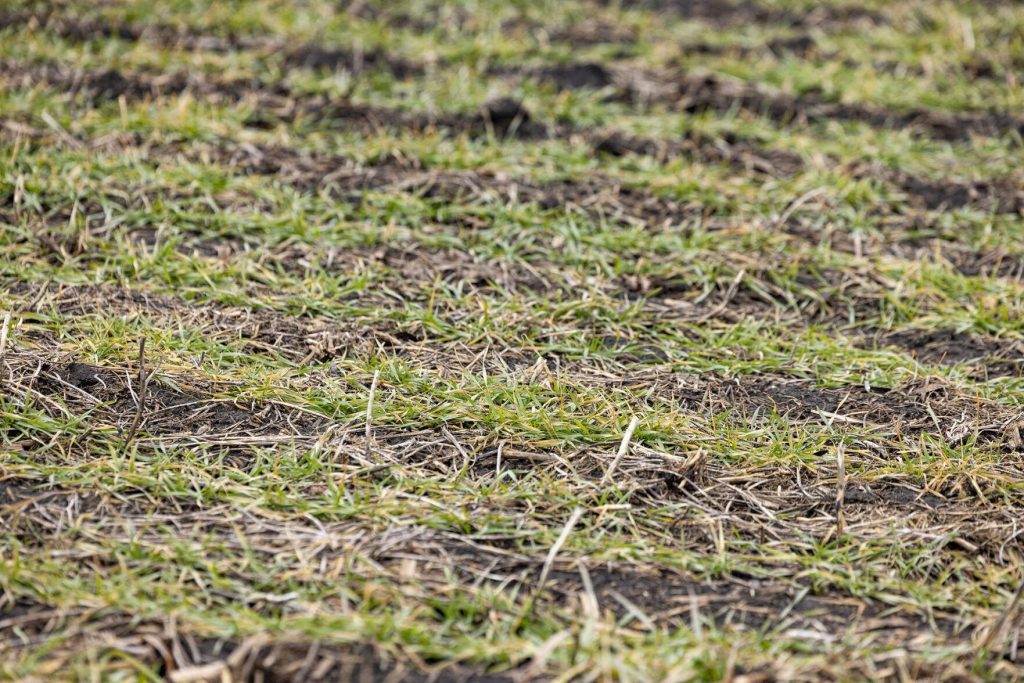Can Illinois winter wheat growers pull off a record state average yield for the fourth year in a row?
It’s early in the season, but some say the potential is certainly there to reach or maybe even exceed the 87 bushels per acre achieved in 2023.
“It got off to a good start,” Matt Wehmeyer, president of AgriMaxx Wheat Co. in Mascoutah, told FarmWeek. “The fall was very dry and wheat likes to be sown in dry conditions.” But he said some areas of the state were too dry, which limited the speed of emergence.
Looking at temperature, he said a warm December allowed plants to keep growing just ahead of a January cold snap, and in areas that did not get snow cover there’s a visible impact.
“There’s a lot of top burn and the fields look kind of a yellowish color. The extra leaf foliage that we had from a strong tillering crop got burned back,” Wehmeyer said. “But we should be in decent shape; it’s not a yield limiting thing at this point in time.”
Wehmeyer thinks yield potential is still “very high” overall, but a lot is riding on upcoming weather.
“Variability is ever present,” he said. “Wheat likes cooler temperatures, particularly during grain fill and hopefully we have a cool May and June again that will help fill some really nice yields.”
Mark Krausz, a Clinton County Farm Bureau member, said he got his wheat crop planted on time and it has an even stand and good tiller counts.
“For the most part we’ve got as good a wheat crop as we’ve ever had, but we need moisture,” he told FarmWeek.
Krausz, past president of the Illinois Wheat Association, noted the plants themselves tend to thrive in drier conditions, and farmers need the ground to be solid enough to make the first nitrogen pass in late February or early March.
“But we have to have moisture to keep this crop going,” he said. “The ultimate time is when it starts to head and starts grain fill.”
As the crop begins to green up, Wehmeyer said growers should be focused on nitrogen application timing and herbicide applications.
“Since we had a really warm December, look at what kind of weed pressures we have and when we need to take care of them.”
He also provided a management tip from recent observations of leaf tissue analyses.
“Some of the highest yielding fields later in the season carried a higher percent calcium,” he said. “So, looking at your soil test levels, if you have a low base saturation of calcium, perhaps you might want to take a look at some calcium foliars into the season, anecdotally.”
In its January crop progress and condition report, USDA rated the Illinois winter wheat crop 1% very poor, 4% poor, 20% fair, 57% good and 18% excellent. The agency’s next condition rating will be released Feb. 26.

